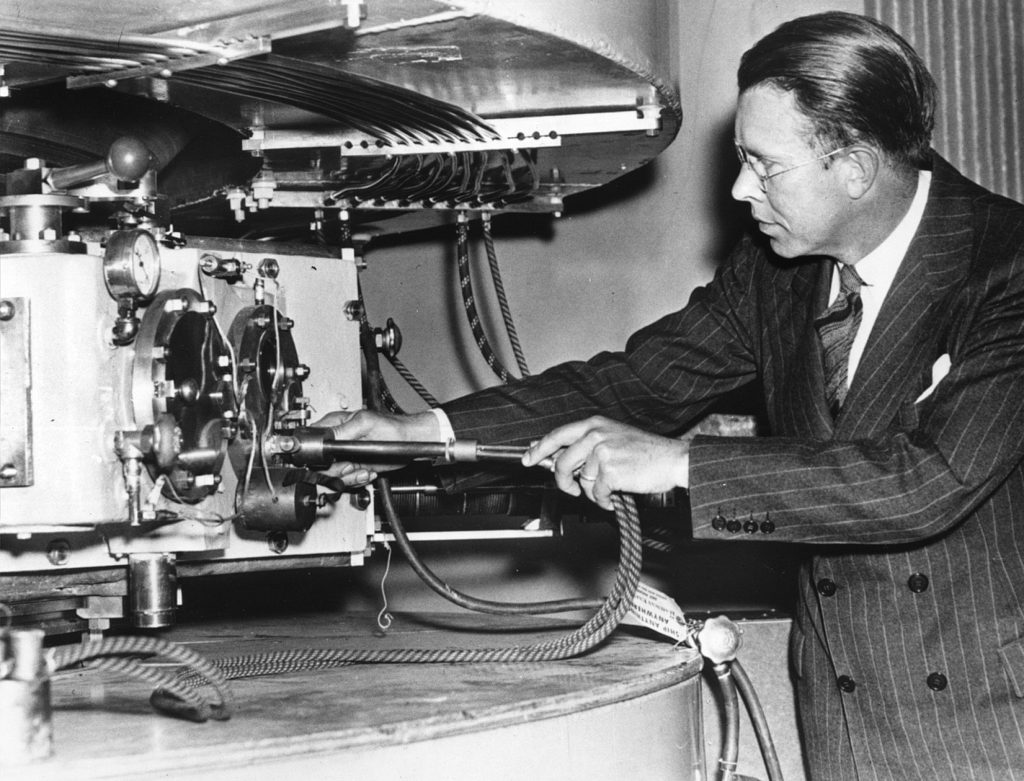Ernest O. Lawrence (1901-1958) was an American scientist and 1939 recipient of the Nobel Prize in Physics for his invention of the cyclotron.
Lawrence held many different positions during the Manhattan Project. He recruited staff for the MIT Radiation Laboratory and underwater sound laboratories to develop techniques to detect German submarines. Lawrence’s cyclotrons at Berkeley were used by other Manhattan Project scientists to discover new elements that could undergo nuclear fission, and he converted another cyclotron for the purpose of uranium enrichment. Lawrence’s cyclotron was also the source of radioactive isotopes used by his brother John Lawrence in his pioneering studies in nuclear medicine. Lawrence was also instrumental in the appointment of Oppenheimer as leader of the Los Alamos Laboratory. He also developed the electromagnetic isotope separation process, which was used at Oak Ridge in the Y-12 Plant. On July 16, 1945 Lawrence observed the Trinity Test.
After the war, Lawrence returned to University of California, Berkeley. He also joined the Atomic Energy Commission and became a proponent of increased government funding and research. After the Soviet Union tested its first nuclear weapon in 1949, Lawrence advocated for the creation of the hydrogen bomb.
Contribution to Nuclear Physics
Lawrence’s most important scientific contribution was his development of the cyclotron, which proved instrumental in the production on fissionable isotopes and success of the Manhattan Project. In 1939, Lawrence was awarded the Nobel Prize in Physics for his invention. For more information on his scientific research and achievements, visit the Nobel Prize website.





